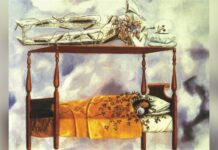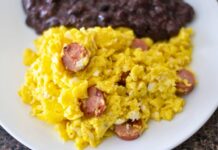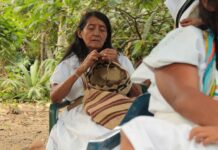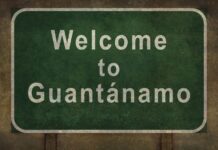Perú: land of Machu Picchu and Cuzco, pre-Columbian treasures; of mountains so tall we require oxygen masks to combat altitude sickness; of Lima’s port-city beauty and bounty of seafood; of Quechua and Spanish languages, often spoken concurrently. When Perú celebrates its independence from Spain, each year in July, it calls the event its Fiestas Patrias, in the plural because it takes two days to fully honor the process of emancipation from the colonizer. On the first day, July 28th, Peruvians celebrate throwing off the yoke, when General San Martín declared Perú independent in 1821. On the second, the July 29th, they celebrate the establishment of their modern-day nation.
Most of the countries in Latin America had to go through this process of renouncing their colonizer, usually one of the two inhabitants of the Iberian peninsula in Europe, but Perú’s process was unique. The other nations that now comprise South and Central America had little to hold them together as nations, before the European invasion. While the land was certainly inhabited by various tribes, all of whom put up some form of resistance to their invader and many of which were utterly decimated by the diseases and expansionist thrust of Spain, Portugal, and a few others, the people who were native to land hadn’t had a chance to organize themselves into “countries.”
Instead, many of what we now know as distinct nations, for example Ecuador, Venezuela, and Bolivia, were the places where various indigenous tribes has built villages and settled for many centuries. But there was little contact between tribes, aside from places where a few different tribes formed part of the same larger tribe, or in cases when different groups would clash into conflict. Topography, that same obstacle that requires us to seek oxygen supplementation, was largely to blame. Bisected by the enormity of the Andean mountain range, the coastal tribes of Colombia, for example, would never meet the ones who lived in on the opposite side of the Andes.
But the land that currently makes up Perú, Chile, and parts of neighboring countries was different in this respect — the tribe that governed and grew it was well on its was to becoming a unified nation. Perú was the seat of the Incan Empire, the most advanced and numerous pre-Columbian civilization on the South American continent. Developing its complex society through the 14- and 1500s, the Incans did not need require additional oxygen. Instead, they were masters of their environment, as most native people are, dexterously talented at navigating both the unforgiving incline of the mountains and the thick magic of the Amazon jungle. Their giant empire, which grew to span the western side of the continent, from present-day Quito in Ecuador to Santiago in Chile, included both of these treacherous terrains.
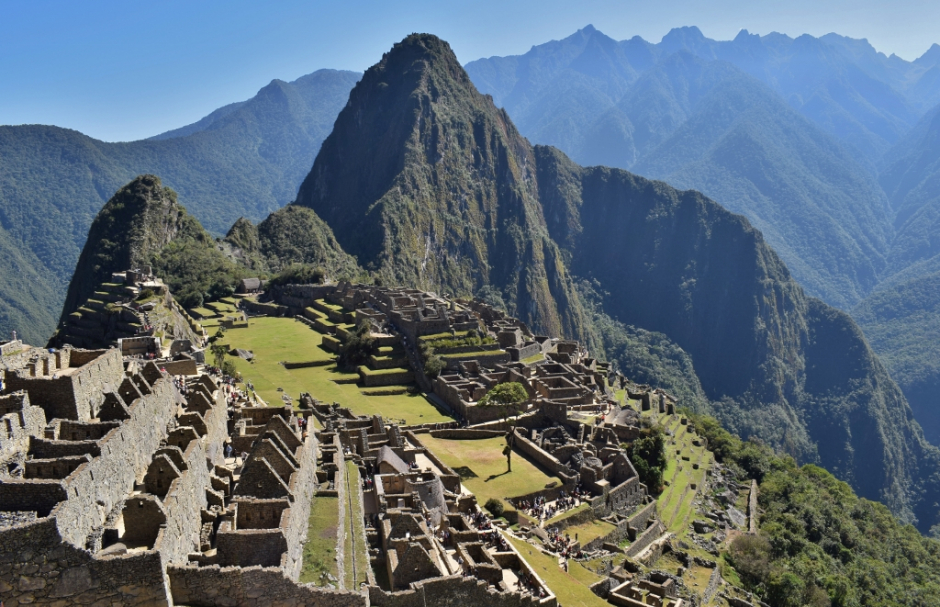
Widely appreciated for their art and adaptive architecture, the Incas were able to build cities, like Machu Picchu, high up in the mountains. They also carved highways and roads into the mammoth Andean range, connecting the various villages they founded to one another via a complex and interlocking network. In retrospect, we can now appreciate the amazing feat of engineering and architecture that went into this. Using nothing but rudimentary implements and their own hands, the Incas created buildings, roads, and art far more sophisticated than their tools.
Their ability to manage terrain, from the driest desert to the steepest incline, propelled the Incas to the maximum expression of power on the continent before the white men came. Settling on Cuzco as their capital — a place they considered to be the navel of the world — the Incas built four long roads, one in each cardinal direction, radiating out from this center of power. Privileging Quechua-speakers as the ruling class, the Incas did not discriminate between genders. Women were just as likely to be part of the noble classes as men, since qualifiers were based on language and ability rather than sex. This four-way expansion quickly yielded the desired result: the Incan empire spread as far north as Colombia and as far south as Argentina, with more than 10 million subjects, who spoke 30 different languages, all of them subject to the Inca rulers.
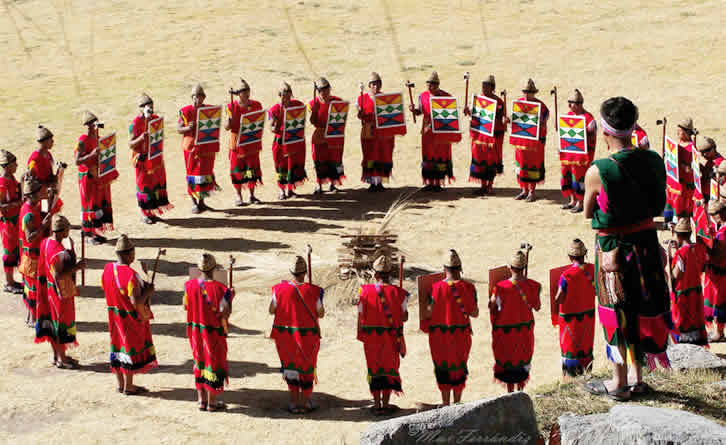
But the Incas weren’t just good at conquering land and people, at building roads and cities. They were also skilled at governing themselves and others. Before the Spanish invasion, the Incas had established an effective system of governance, which, like their architecture, was layered and complex. The Incan government was based on a central authority — the king — who managed the next tier of authorities, who, in turn, oversaw the next layer, and so on.
A king was the supreme ruler, though it is believed that the queen also wielded power over the empire. Together, they oversaw the next line of governance, which was a noble man or woman who ruled over a collection of ten clans, closely related to the king’s family. Next, was another set of 10 clans, now more distantly related to the king; beneath them another layer of ten clans, unrelated to the king but given an honorary position. The very last layer of the organization were regular folk, not nobility, who lived in a communal fashion, with larger groups of families forming a village and giving one another mutual support. Called ayllus, they answered to local leadership of a small group of nobles, which often included women.
There were even more layers to this governmental structure, with noble leaders answering to regional governors. The complexity of the system was physically represented by the size of the earspools that each level of ruler was encouraged to assume. To the newly arrived Spaniards, this practice served as inspiration for the nickname they attached to the higher-ups of the Inca empire: orejones. The more orejón, the more important the post. Big-eared leaders were in charge of the religious and civil life of the Incas and their conquered neighbors, all of whom were converted to the Inca way of running things.
Governors also collected taxes from the various villages, including the ones they defeated and absorbed into the empire, and the reiteration of the number ten is closely related to this practice. Developing the quipu, a sort of abacus, the Incas were able to keep their accounting straight and developed a whole mathematical system based on the number ten, one which closely resembles the one we use today. In an example of the strangest of cosmic ironies, the Incas were intricately organized and expansionist, imposed their language, culture, and religion on the people they conquered, and were experts at levying taxes to the benefit of the empire. There was a despotic element to the Incas’ ruling style, a system that closely resembled that of the Spaniards, who would earn the support of some of the subjugated tribes simply because of presenting an alternative.
The colonization process of Perú was a long one, begun in 1524 by Francisco Pizarro, on of the men who accompanied Vasco Nuñez de Balboa during his journey to “discover” the Pacific Ocean. Heading up an exploratory mission that was destined to push on southbound through the continent, the unscrupulous and illiterate Pizarro took his crew as far as Panamá, until the difficult terrain and defensive tribes they encountered persuaded them to turn back. But gold pieces discovered in a northern village were incentive to keep trying. After another failed attempt, Pizarro, now associated with the equally greedy Diego de Almagro and blessed by the Spanish crown, finally reached the city of Cajamarca in 1532.
In Cajamarca, the king Atahualpa was supported by an army of 2000 well-trained soldiers, but he was also engaged in a power struggle with his brother, Huascar, who governed the southern part of the empire. This distraction was well-known to the conquistadores, who took the opportunity to ambush Atahualpa’s numerous army with a much smaller but well-armed group in the scant hundreds, who would pretend to come in peace. Some reports even cite Atahualpa’s penchant for chicha, a fermented corn drink that often accompanied the king’s meals, so that it is possible that he showed up to this encounter not only stripped of weapons and weakened from his kingdom’s internal strife, but also drunk.
The result of the encounter was that when the Spaniards pulled their power move of handing Atahulapa a Bible and informing him of his new religion, the Incan ruler responded with his power move, putting the book up to his ear and when it failed to whisper the word of god to him, pitching it to the ground. We can practically hear the collective gasp of the Spaniards, who took this sacrilegious move as the perfect opportunity to open fire on the Incas, taking their leader prisoner. The Spaniards exacted a ransom in exchange for the return of Atahualpa, one that consisted of filling a room with gold and silver, an easy feat for the Incas who had mined much of these metals. But even when their request was honored, the Spaniards executed Atahualpa for his sins against Christianity.
Even after Atahualpa’s death, his in-fighting against his brother Huascar would benefit the Spanish. Pizarro declared Cuzco the new capital of the region. He chose a new ruler, Manco Inca, allowing him and his men to push on, finding support people who anticipated that their new colonizer would be less tyrannical than the northern Incas. This false belief allowed Pizarro to advance all the way to Lima, on the coast, and establish it as the new capital thanks to its strategic location on the coast. By the time his strongest Incan ally, Manco Inca, realized that the new government was no better than the old, it was too late. The Spanish had taken much of present-day Perú.
Not ready to capitulate, Manco Inca retreated to Vilacamba, where the Incas would wage their resistance to the Spanish conquest for another 40-some years, delaying the establishment of an official virreinato until 1542. In a double reversal worthy of a Netflix original series, Pizarro and Almagro also clashed internally and put a hit out on each other in 1541, each attempting a power grab like Atahualpa and Huascar had a decade earlier. Their in-fighting resulted in both of their deaths and in the messy victory that would perpetuate the Incan resistance for another three decades, until the last native general based out of Vilcabamba, Tupac Amarú, was executed in 1572. Though less than ideal, this retreat and concentration of remaining Incas is likely one of the reasons their language — Quechua — endured, when few other native tongues did in South America. It is one of the country’s official languages today and spoken by roughly 19% of the population.
By this time, the virreinato de Perú encompassed most of South America, with the exception of Brazil and Venezuela, and Lima was the capital of this vast expanse. This lasted for almost two centuries, until the territory was further divided into the virreinatos de la Nueva Granado to the north and Río de la Plata to the south. Colonialism in Perú progressed along similar lines as in the rest of the continent, with the Spanish exploiting as much of the natural resources as possible, sending everything back to Spain via Lima’s handy port, and utilizing the remaining indigenous population and mestizos descended from Inca women and Spanish men as an enslaved workforce.
One of these mestizos, a direct descendant from Tupac Amarú I, is the first to begin the process of independence from Spain in 1780. José Gabriel Condorcanqui Noguera, better known as Tupac Amarú II was fed up with the forced labor and taxation the virreyes imposed. He began a battle of resistance against the invasive forces, which lasted six months and resulted in his death, but not before his cry for freedom was heard outside the borders of Perú. Four decades later (1820), in his quest to liberate the southern part of the continent occupied by present-day Argentina and Chile, the criollo (American-born white man) José de San Martín, lent his efforts and troops to the Peruvian liberation effort. Together with Tupac Amarú, these two men will be assigned credit for giving the present country of Perú its freedom.
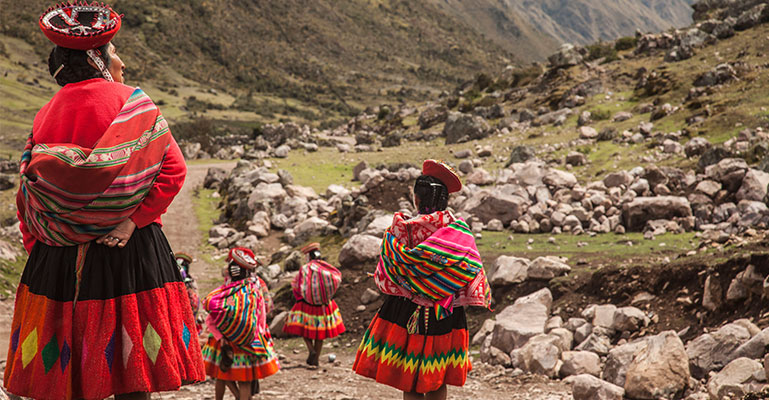
San Martín declares his job done by 1821, when the coast has been liberated but the territory inland is still under the grip of Spain. This is the day remembered as the moment of independence. However, a large chunk of the former virreinato was still under the control of Spain at the moment, and fearing the strengthening opposition of the Spanish forces, San Agustín calls in the help of Simón Bolívar, Venezuelan general who has just achieved victory in Colombia. Bolívar, with his head general, Antonio José de Sucre, come to the rescue and in 1824, after the famed battle of Ayacucho when Sucre declared victory, Perú is finally and permanently declared independent. A year later, in 1825, Bolívar takes La Paz in what was known as “upper Perú” and gives that country his name — Bolivia.
Despite the assignation of the date of Perú’s independence to July 28th, 1821, the full process would take another three years. Of all of the Latin American wars for independence, this was perhaps the most dilated, due to the many distractions that kept all of the parties from being fully invested in the conflict: Atahualpa fighting Huscar; Pizarro fighting Almagro; Bolívar busy in Colombia and San Martín busy in Argentina; Napoleon defeated in Spain. The other key factor was the Incas’ savvy and development of their own empire in the centuries before they were defeated.
To this day, the remains of Machu Picchu and archaeological sites of Cuzco remain a testament to the Incas’ achievements. Their last remaining general, Tupac Amarú, is still a synonym for the revolutionary and self-preserving spirit of the natives and mestizos, which still endures in Perú. The Peruvian flag is raised each year for the entire month of July in celebration of the resistance and eventual victory of the Peruvians. The 28th of the month serves to memorialize the independence, and the day begins with a 21-cannon salute and a mass delivered by the archbishop, attended by the president. The president then addresses the nation with words of encouragement and celebration, and the country relaxes into a day of parties, beer, and fireworks.

The 29th of July is then used to pay homage to the Armed Forces and National Police, with parades scheduled around the country. In an effort to increase internal tourism, Perú extended the holiday to include the 27th of July as a day off work in preparation for Las Fiestas Patrias. No doubt, a foreign traveler would enjoy this time of year in Perú just as much, regardless of her knowing the full story behind the revolution and the incredible efforts made to salvage what was left of an impressive native empire and progress beyond being an oppressed European colony. But chances are that knowing the rich and convoluted history of the independence of Perú makes it all the more sweet.
For Image credit or remove please email for immediate removal - info@belatina.com






